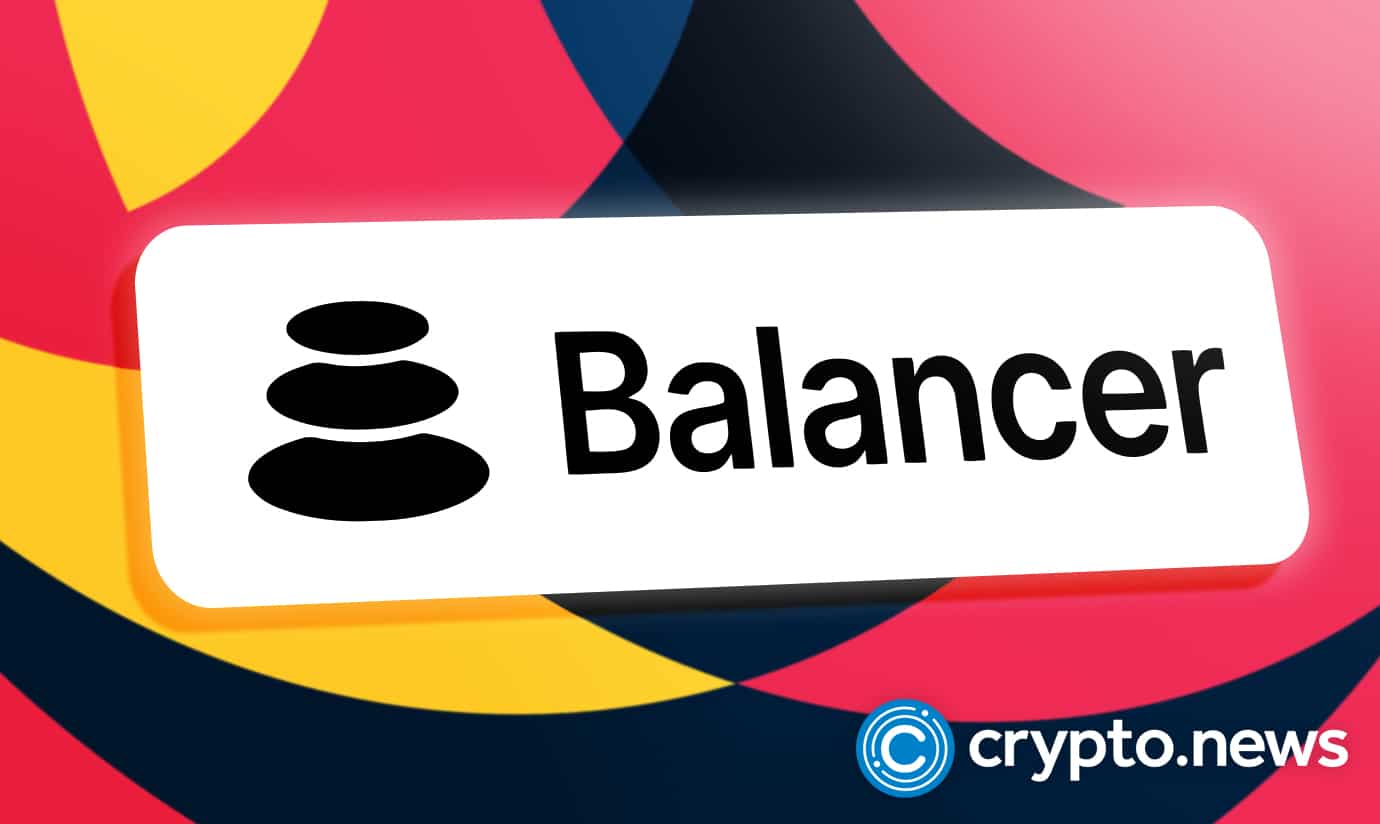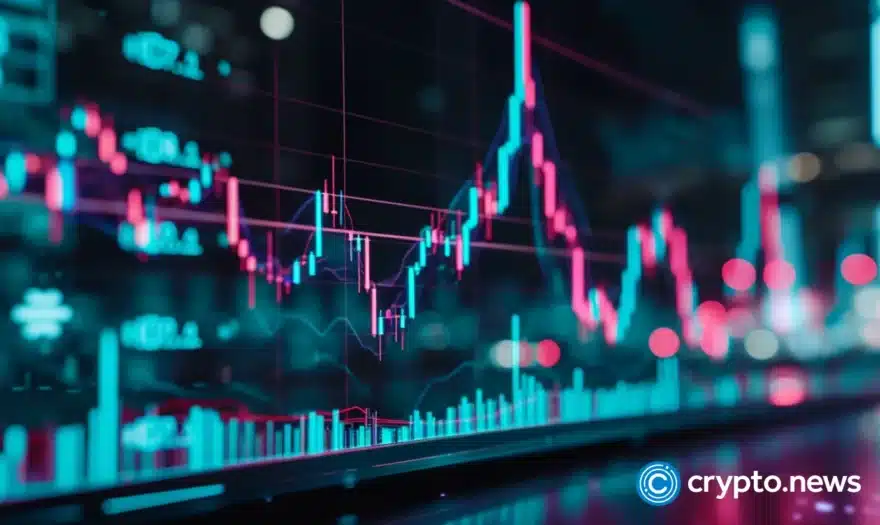Balancer AMM- What Is It, and How Does It Work?

Balancer is an automated market maker (AMM), portfolio manager, and trading platform that runs on the Ethereum network. It is also a decentralized exchange (DEX) that utilizes smart contracts to offer its services, including passive earning methods. The exchange operates similarly to Uniswap and other popular DEXs like PancakeSwap and Sushiswap. A user is only required to connect their wallet to the platform and perform a token swap.
The exchange relies on Liquidity pools rather than order books to source liquidity where a user can transact any amount they wish without waiting for a similar take/ make order to be listed. Using liquidity pools, the exchange creates the chance for users to provide liquidity and earn rewards.
Balancer is also similar to an index fund where users can create funds based on the cryptos on their portfolios. These funds are known as Balancer pools, and they allow any user to provide liquidity to a pool by depositing a crypto asset in them. The users who provide liquidity (LPs/ Liquidity Providers) earn a portion of trading fees collected in the exchange. The fee is collected in the native token Balancer (BAL), which the LPs receive as rewards.
The provision of liquidity is essential to the exchange as it facilitates the smooth running of trading activities without slippage. Below is more information on Balancer and its BAL token.
Company Overview
Balancer was founded by Fernando Martinelli, a well-known Brazilian entrepreneur, and Maker Community member. He made the exchange the first project of Balancer labs and tested it on Block in 2018. He then published the exchange’s whitepaper alongside his technical partner Nikolai Mushegian in 2019.
The duo then brought Mike McDonald (creator of mkr.tools) onboard to actualize the exchange plan by building it. They then explained that the exchange is based on the operations of Uniswap through utilizing an AMM and having a self-balancing weight portfolio integrated with a price sensor.
The exchange did not conduct an ICO, and it only launched its project directly in 2020. It went ahead to organize a seed funding round that collected $3M. The funding round was spearheaded by Accomplice and Placeholder. In June, it launched $BAL, becoming the second-ever DeFi project to have a governance token. At the time of launching the token, the exchange was worth $40M in TVL. It has grown through time to become one of the largest and best DEXs of the present day. It ranks fourth in TVL after Curve, Uniswap, and SushiSwap.
Key Features of Balancer Crypto DEX
The Vault
The exchange utilizes the Vault as its central component. The Vault is a smart contract that controls all tokens in every balancer pool. It also serves as the gateway through which most operations in the exchange (Swaps, market entries, and exits) are carried out.
It also facilitates separation of accounting and token management from the pool logic. Due to its presence, the smart contracts on pools are much simpler since they now play more minor roles in managing funds. By using the Vault, the exchange benefits in the following ways:
- This design allows for the accommodation of a variety of pool designs.
- The exchange allows anyone to apply their ideas to make a custom liquidity pool connected to the exchange’s current liquidity.
- The pools remove the need for developing a DEX as one can just come up with their conceptualized pool designs and connect them to the exchange.
- The design also makes batch swaps more efficient as all tokens in the supported pools are readily available for anyone to transact in.
- The Vault also has systems that keep the balances on the pools independent, thus permissionless, ensuring that if one pool gets manipulated, the others cannot suffer from the same attack hence keeping the funds safe.
Balancer Pool
The exchange relies on Balancer pools’ smart contracts that determine how traders exchange tokens. Unlike its competitors, Balancer has pools with predefined specifications like allowing customization. Its open design allows anybody to create a pool, thus increasing the pools’ flexibility of pricing and functionality.
Smart Order Router (SOR)
Balancer uses the Smart Order Router to help users discover the best pricing for their trades. The SOR identifies the best price for selling and buying orders in a transaction in either one or multiple liquidity pools. It increases parallel to the expansion and diversity of the Balancer pools as it gets new options to check from.
The innovation allows the Balancer pools to be utilized as a single large source of liquidity within the ecosystem. Through connecting and integrating with the SOR, any custom pool can work on Balancer and provide liquidity to everyone using the platform.
Merkle Orchard Smart Contract
The Merkle Orchard is a smart contract used to claim the weekly Liquidity Mining distributions. It allows liquidity providers to claim their reward tokens. The contract checks the Merkle root of the accumulated tokens during the distribution of the rewards. This smart contract saves on gas fees that could have been spent while claiming the Liquidity Mining rewards in other ways.
Currently, the Merkle Orchard smart contract is being used to distribute BAL and other tokens designed to encourage Liquidity Mining on the protocol.
Balancer Gnosis Protocol (BGP)
The Balancer Gnosis Protocol is the default trading interface on the Balancer platform, and it applies Gnosis Solvers and the Balancer Vault to facilitate trades in batches. The protocol allows traders to swap tokens through signing messages to enjoy gas less (Zero gas fees) transactions.
The Gnosis Solvers match transactions first using the on-chain liquidity to allow users to take advantage of the Coincidence of Wants (CoWs). CoWs is the process in which P2P transactions are settled directly without using an AMM, which saves on Fees and avoids slippage.
It also safeguards them for Miner Extractable Value (MEV). BGP also taps into other DEXs to guarantee that traders on Balancer receive the best prices for their trades. It also groups gasless transactions to ensure that the failed transactions do not lead to fee loss.
These are the advantages of using BGP:
- Gasless transactions
- MEV protection
- Good prices for transactions
- Failed transactions do not incur gas fees
How Does the Balancer Token Gain and Sustain Its Value?
Balancer’s native crypto BAL is an essential currency in the ecosystem as it serves as both the governance and the utility token. For instance, the users who deposit crypto holdings in the Balancer pools receive BAL as compensation rewards.
The token is limited to only 100 million BAL, and no more shall be minted in the future. The exchange distributed 15 million BAL during its inception and set aside 65M coins for distribution to liquidity providers/LPs( users who deposit assets in Balancer pools). It plans on distributing 145K tokens a week to users meaning that the supply will be fully unlocked by 2028.
This mechanism ensures that the coin maintains a steady supply and demand dynamic controlling its inflation rate. Also, the exchange reinforces the coin’s supply and demand dynamic by using it as a utility and governance token, which gives it a real-life use case. As a result, the Balancer token can get and maintain its value.
BAL Token Price Prediction
Balancer token (BAL) is currently trading at $14.29 with a 24-hour trading volume of about $42M. It has a total value locked (TVL) of over $3.5B and ranks as number 370 on the CoinMarketCap listing.
The coin has a total market capitalization of slightly above $99M showing that it is one of the best investment alternatives in the market. Due to its small market capitalization, the coin can make more profits than most large coins upon investment as it does not have to move by far (the market cap) to influence its price. This coin may surge more in the future as the Balancer exchange keeps getting more users.
However, it is best to DYOR before investing in it or any other crypto project.
How Does Balancer Work?
Balancer works similarly to an index fund where its pools are composed of eight different crypto assets. A pool’s value is determined by the percentage of every token locked in it. The weight is chosen during the creation of the pool in question.
Balancer as a Self-Balancing Index Fund.
The Balancer pools are run by underlying smart contracts that ensure that each pool maintains a correct proportion of assets even as the prices of the assets held within them vary with the market.
For instance, if a particular coin like DAI holds 25% of a given Balancer pool and its market value doubles, the underlying smart contracts automatically half it for the value of the coin to remain constant. The halved value of the DAI token is then made available by the smart contracts for the users who plan on buying the coin as the price goes up.
The question arises if the cut value is still beneficial to the LPs. The answer is yes, and they still earn their rewards even as the pools get rebalanced.
The Balancer Pools
The crypto space is full of ups and downs, so users should explore ways of passive earning. Balancer offers its Balancer Pools as a way of earning passively. The pools are available in both public and private iterations, according to the risks involved.
Public pools allow anyone to lock their crypto holdings. The parameters of these pools are preset and can never be changed before their launch. Therefore, they may be helpful to users with small crypto holdings seeking to earn passively from the platform.
The private pools allow only the pool creator to add or withdraw liquidity. They only have one user who can adjust all pool parameters, including gas fees, accepted assets, and weightings. These pools are of great use to asset managers who hold large crypto portfolios and seek to earn passively from specific assets.
The private pools also have another iteration called the smart pools. They are owned by smart contracts and allow pools to be programmed to perform additional functions like changing weights or creating index funds that track certain assets.
Is It Safe to Trade On Balancer?
Balancer has high-level security features that protect its users from cyber attacks. The system where liquidity is provided through Balancer pools and connected to the Vault ensures that no compromised pool can compromise the whole platform. Therefore, a total loss can barely happen on the platform. However, it is advisable to follow the security instructions given by the exchange to prevent creating security loopholes.
How Does Balancer Compare to Its Competitors?
Balancer is one of the best crypto decentralized exchanges. Therefore, users usually want to compare how it relates to other DEXs. This is how Balancer compares to cryptoDEX Uniswap.
- Uniswap has more liquidity and thus less slippage as compared to Balancer. This DEX hosts over $2.59B in collateral assets making its liquidity deeper than Balancer’s.
- Balancer has the Gnosis Protocol that allows liquidity miners to get their rewards without incurring gas fees. Failed transactions on the BGP also do not incur gas fees which is a cut above its competitors, including Uniswap.
- Balancer has the upper hand in the diversity of assets that can be added to its liquidity pools. It can hold up to 8 different crypto assets per pool, while Uniswap only allows two assets to be locked in the same pool at a ratio of 1:1.
- Balancer is also more flexible than Uniswap since its Vault and Balancer pools mechanism allows users to create custom pools and preset their math for value calculation. This mechanism allows users to explore their options during liquidity mining and get more satisfactory services.
Final Word
Balancer is one of the best crypto exchange alternatives in the DeFi sector. It has so many features that are beneficial to its users. Also, it is decentralized and exercises it in more ways than most of its competitors. It allows users to explore and predefine how they want to earn rewards from its liquidity pools by allowing customizable pools.
However, it has some shortcomings, like liquidity may be lower than most popular DEXs such as Uniswap. Therefore, users should explore different options as these DEXs are best in given categories and may fail in others. Also, it is best to consider how good the exchanges are in terms of security and reliability.
Additionally, it is best to explore the crypto space with caution as it comes with its risks. It is filled with scam projects and other ‘feasible’ projects that could easily crash in the future. The best way to evade incurring losses from such projects is to get reliable sources of information like verified media outlets and data trackers.
Finally, remember to maintain balanced investment portfolios since not all assets in the crypto space or crypto-related projects are guaranteed to make profits in the future.














